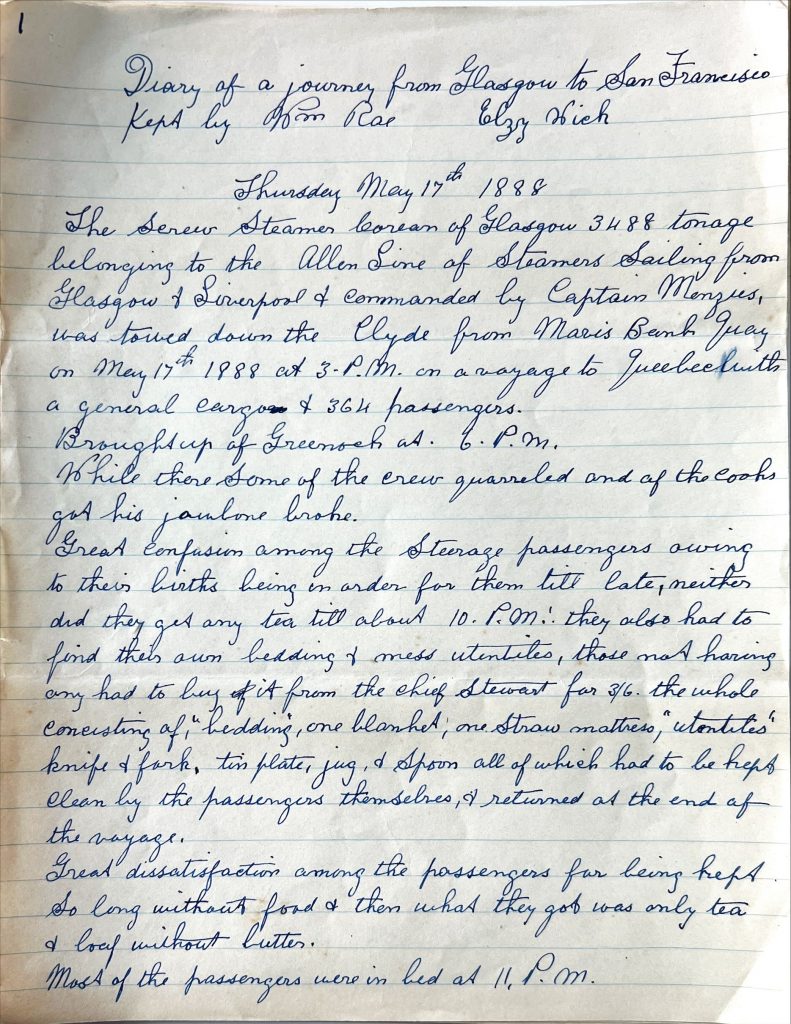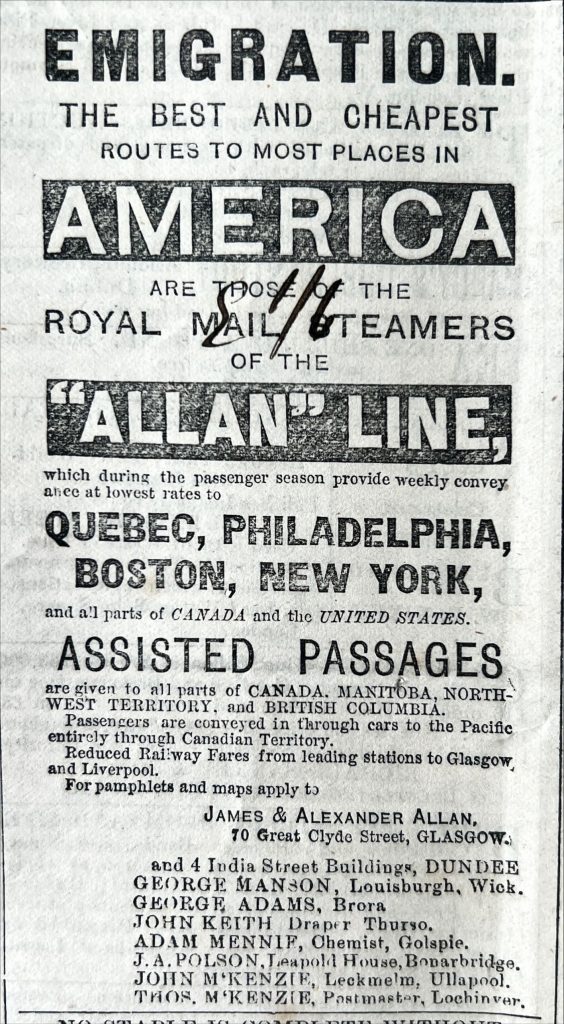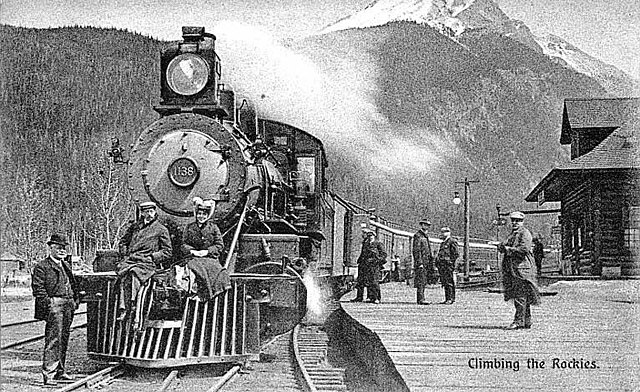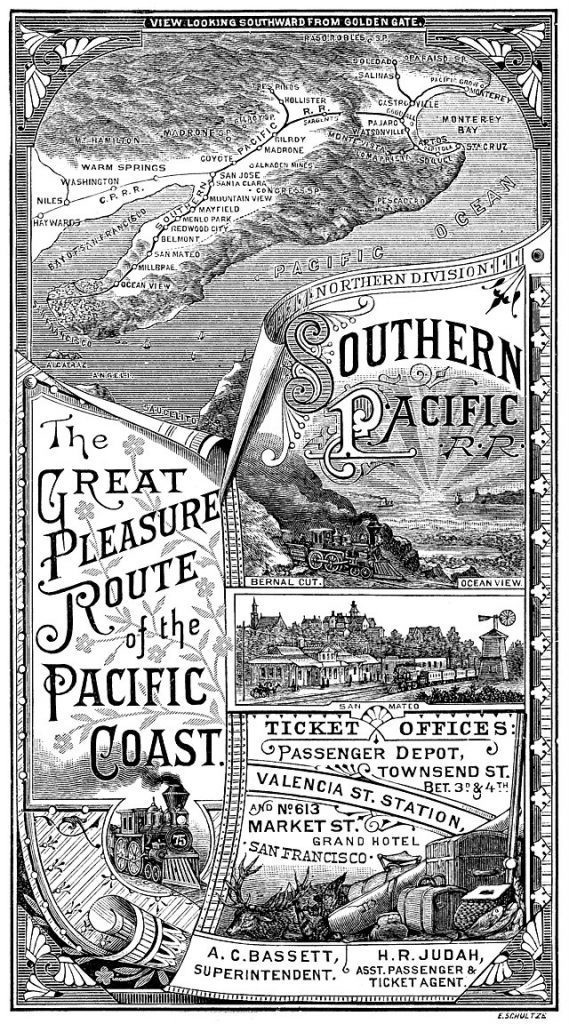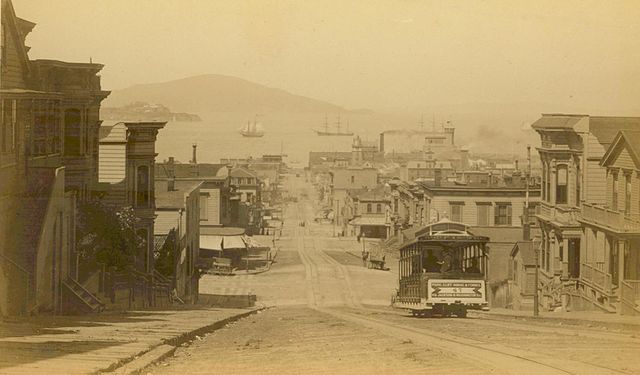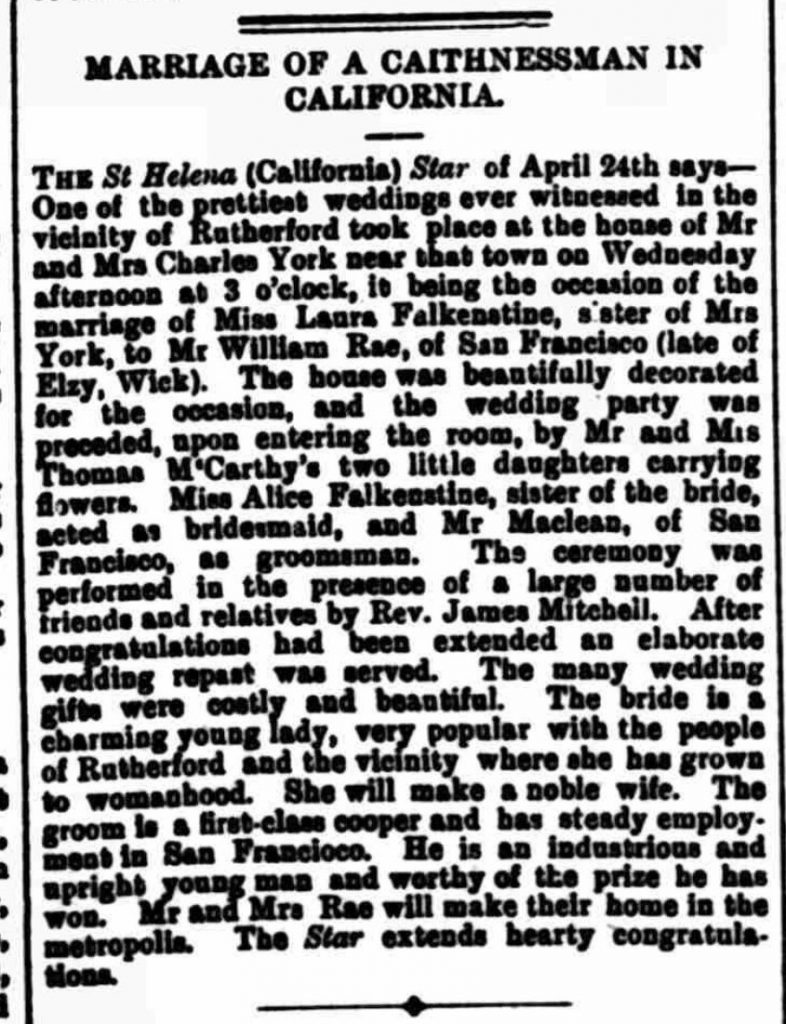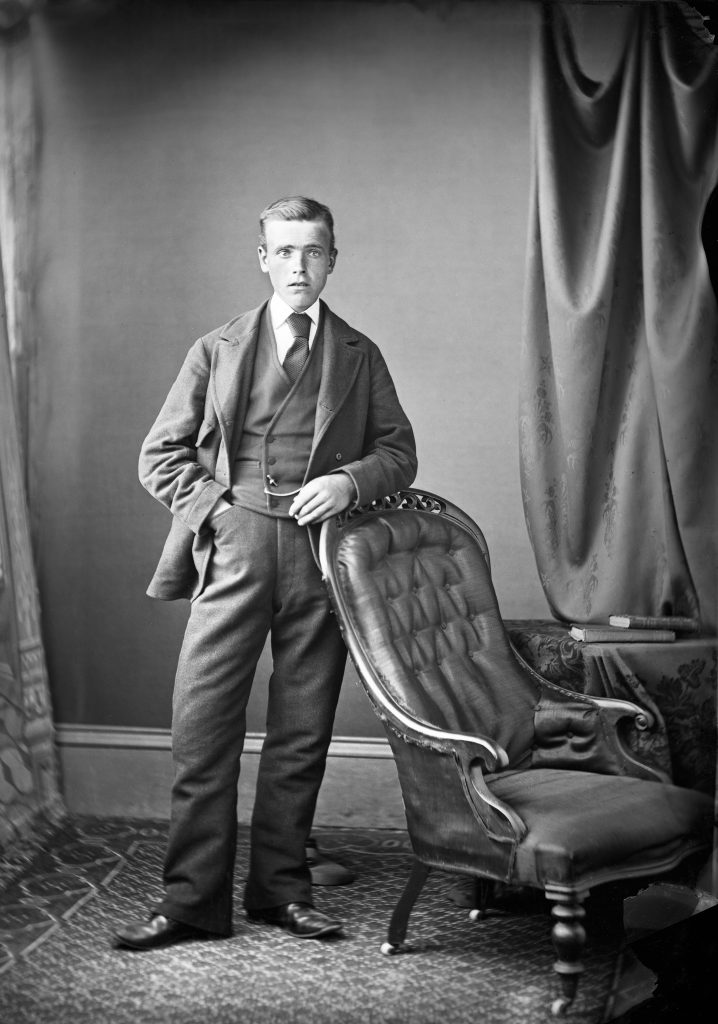
William Rae of Staxigoe, 1876, The Johnston Collection, courtesy of the Wick Society (Ref. JN05974P048)
A Brief Introduction
In the hundred years from 1820 to 1920, over two million emigrants left Scotland for the New World.[1] Canada, Australia, New Zealand, and South Africa were popular destinations, but not as popular as the United States, where more than half of all Scots emigrants made their home between 1853 and 1914.[2] High wages, availability of land, and demand for skilled labour made the country very attractive.[3]
The John o’ Groat Journal carried a weekly advert for Allan Line steamers promising the ‘best and cheapest routes to most places in America’.[4] The passenger line had an agent in Wick, so even those far from the embarkation port could arrange passage with ease.
Scots have a long tradition of emigration, pushed, according to Marjory Harper, by ‘the twin driving forces of adventure and exile’.[5] We don’t know what exactly prompted William Rae to leave Caithness for the USA, but we know that the 1880s was a turbulent decade which saw unrest in both the farming and fishing industries in the county. Crofter agitation led to the introduction of the Crofters Act in 1886 which ensured secure tenure, fair rent, and the right to compensation for improvements made to crofters’ holdings.[6] However it did not make it any easier for individuals to secure a piece of land of their own. The nature of the fishing industry in Wick had also changed by the 1880s. Much larger vessels had replaced smaller boats and as a result the number of boats fishing out of Wick had almost halved from the peak in the early 1860s.[7] This meant fishermen were much less likely to own their own vessels and had to rely on others for employment. Consequently, the state of affairs in Caithness’ two main industries would have made emigration if not necessary, certainly desirable.
Author: William Rae
William Rae was born in Staxigoe, just north of Wick, on the 26th of July 1859, to James and Elizabeth Rae. His father was a farmer at Elzy, Staxigoe. The 1881 Census lists William as a 21-year-old farmer, living with his father, a farmer of 40 acres, his mother, brother George, and sisters Elizabeth and Jessie.
By 1888, at the age of 29, William had made the decision to emigrate to the USA. He travelled from Glasgow to Quebec on the steamship ‘Corean’, an Allan Line vessel, then across Canada by train to Vancouver, then steamer again to Seattle and finally to San Francisco by train.
From a Northern Ensign report from 1896, we learn that William was employed as a ‘first-class cooper’ in San Francisco. The article described his wedding in April 1896 to Laura Falkenstine; a ‘charming young lady’. They married in Rutherford in Napa County, California, where the bride grew up.
Provenance: Private Deposit
This diary extract is from our Wick Society Collection. The Wick Society was established in 1971 to promote the history and heritage of Wick. The Society cares for a number of historic buildings and collections including Wick Heritage Museum, the Johnston Photographic Collection, the traditional Fifie fishing vessel the Isabella Fortuna, and Wick Voices oral history project.
In December 2020, the Wick Society deposited their collection of historic documents with us here at the Caithness Archive.
Format: Diary
Accounts of emigrant travel experiences give us an insight into the realities of transatlantic travel, in this case in the 1880s. This diary also includes rich descriptions of rail travel across North America.
Scottish accounts of transatlantic journeys are plentiful. There was considerable interest in the subject of emigration and so keeping a diary was common for travellers.[8] It was also a way of passing the time during long crossings. Most surviving accounts however are those of better off passengers whose experiences were much more pleasant than the majority, who had to withstand conditions in steerage.[9] Like William Rae, Robert Louis Stevenson crossed the Atlantic by steamship, then on to California by train almost a decade before Rae. He too left an account of his journey in his book ‘The Amateur Emigrant’ (1895). He travelled in steerage and described in detail the conditions he endured.[10] Most emigrant’s journeys continued overland once the ship had reached her destination.[11]
By the 1880s journey times were much faster and the hazards and hardships endured by earlier emigrants were largely in the past. William Rae’s diary, rather than providing guidance to prospective emigrants describes the sights and places he encountered on his way to San Francisco. It appears to be a fair copy transcribed from notes taken during the journey.
Glasgow to San Francisco
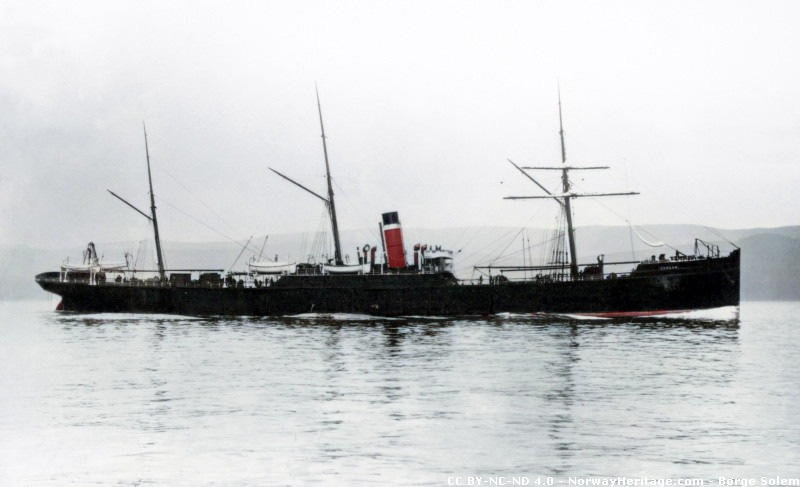
The Corean Steamship, built 1881, date of photograph unknown. Image courtesy of www.norwayheritage.com. Link to licence https://creativecommons.org/licenses/by-nc-nd/4.0/legalcode
William Rae left Scotland for the USA on the 17th of May 1888 on the steamship ‘Corean’. By this time steam had replaced sail for transatlantic crossings and the journey time had been cut from months to less than two weeks.[12] By June the 11th he had arrived in San Francisco.
On board the Corean were 364 passengers bound for Quebec. Among that number were 114 children from Quarrier’s in Glasgow. In 1872, William Quarrier, the founder of Quarrier’s Orphan Homes, began an emigration scheme to Canada for orphan children. The children were sent to live with families on farms, usually in Ontario.[13] On this occasion, Mr Quarrier accompanied the children on their journey. Rae notes on the 20th of May ‘religious services in the cabin at 10:30 pm conducted by Mr Quarrier, he is along with the children from his home.’
Rae writes about the weather, sailing conditions, the meals received by the passengers, and any incidents of note. On the 22nd of May he wrote:
Wind and sea getting up in the evening, one cattleman got his leg broken he tumbled down to the side of the vessel by her rolling so much; the cattleman those that come over from America attending the cattle on the ship from America to Glasgow they have a free passage on return; there has been five or six accidents through the same cause since we left one woman got her head cut by falling.
Once in sight of land William Rae recorded his observations on the surrounding landscape and the industries of the places he passed.
Saturday May 26th Passing through a lot of Newfoundland fishing vessels lying at anchor they fish in small boats with one man & sometimes two in each boats, fishing for cod, they bring them to the ships where they cure them; they catch them all with rippers same as our fishermen do at home sometimes.
On the 28th of May the Corean entered the Gulf of St. Lawrence. As they sailed along the east side of the river, Rae describes the:
beautiful view of the thickly wooded hills along the coast with some small villages and scattered houses all the way. There don’t appear to be too much cultivation of land along here.
As well as describing the landscape Rae gives us an idea of the strict conditions Canada imposed on immigrants regarding health and disease:
The Canadian Doctor came on board at six o’ clock in the evening. All passenger ships have to be examined by the government Doctor before being allowed into port in case of any infectious disease being aboard and also to see that the ship is properly clean. There was great confusion when it was known that all the passengers had to be vaccinated, the ship doctors protection ticket being of no avail; during the time the two doctors were busy vaccinating some of the passengers slipped past without being done and the consequence was that they all had to be examined again and some of them done the second time, in the event of anyone refusing to have it done they would be delayed in quarantine for fourteen days.
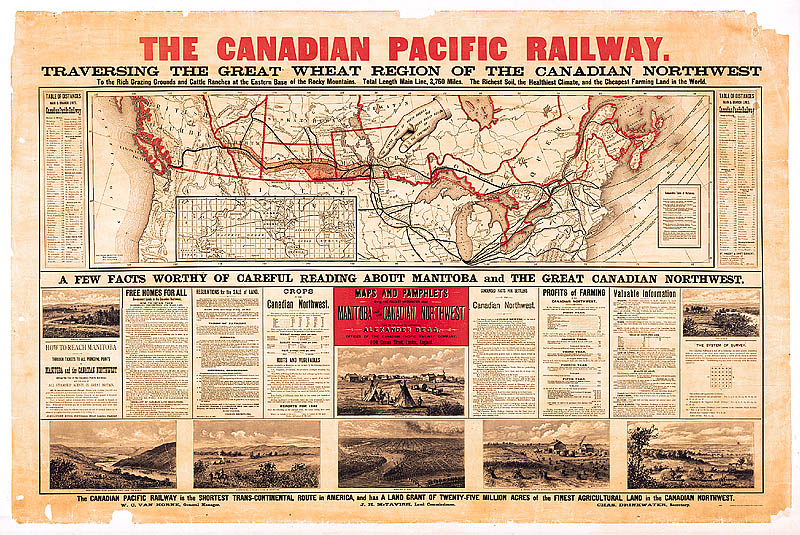
Canadian Pacific Railway map poster, c.1885. Image courtesy of https://www.collectionscanada.gc.ca/canadian-west/052920/05292057_e.html.
The ship docked in Quebec that night and the following day Rae boarded a Canadian Pacific Railway train headed west. He described the carriages or ‘Colonists Sleeping Cars’ as they were called, as having seats that turned into beds sleeping two. Each carriage had twenty-eight beds with a toilet at one end and a stove at the other. The passengers had to provide their own bedding but as the weather was warm most slept with a topcoat or similar as a cover. Rae had bought provisions to cook on the train to save money.
The first stop was Ottawa after passing through Montreal during the night. They only stayed for half an hour but Rae was able to observe that the town was ‘picturesquely situated’ with ‘many fine residences but the government building overshadows them all. There was a fire in a wood yard during the night and it wasn’t extinguished while we were there, the fire brigade being busy at it trying to put it out.’
On June the second, William writes how he was reminded of home. ‘Late last night I spoke to a son of Wm. Couper’s from Hempriggs just as we were leaving Schrieber Station I mention because it was the first I have met from home that I knew since leaving Glasgow.’
He changed trains in Winnipeg to continue his journey west. At this point, ‘the highland crofters and the foreigners all left here to go on some other train’, possibly to take up land in rural Manitoba. Further west he stopped at Brandon, the largest grain market in Manitoba, where he met three young men from Caithness who had been there a month. The following day he saw ‘the finest part of the whole country, as far as the eye could reach all around it is as level as a billiard table….but strange to say there is not much farming to be seen owing to the land along the line being held by speculators for one mile on each side of the line, by their high process they drive the farmer further back where they can get it on easier terms from the government another reason why there is not much farming along the line is that the grain catch fire sometimes from the passing trains and destroy great quantities of it; the extreme heat in summer along with the drought makes it very combustible.’
The train took Rae through the Rocky Mountains, an incredible sight for a young man used to the flat landscapes of Caithness. He said of this part of the journey ‘a more wilder and terror striking route no railway could take, the enormous mountains to be seen from the carriage windows in every direction thousands of feet high covered with snow on the top in some the line is cut along the sides of the mountains like a shelf, and hundreds of feet below the waters rushing with a tremendous noise ….is a sight that can never be forgotten by anyone taking the journey’
By June the 6th he had reached the end of the Canadian Pacific Railway line in Vancouver. He describes Vancouver as ‘a beautiful little town of two years growth with a population of five thousand two hundred’. It was here he said goodbye to two passengers from Nairnshire that had crossed the Atlantic and the breadth of Canada with him. Rae was the only one of the 364 passengers on board the Corean that was to go as far as San Francisco. ‘Tired of laying on the hard boards of the train’, he treated himself to a night in a hotel before catching the steamer to Seattle, his first port of call in the USA. It was a short sail from there to Tacoma, where he caught a train to Portland, before taking the Southern Pacific Railway down the west coast of the USA to San Francisco.
Rae arrived at his final destination of San Francisco at seven o’ clock in the morning of Monday June the 11th, 1888, having travelled six thousand, five hundred and seventy-three miles from Glasgow twenty-three days before. He signs off ‘And now in concluding my diary of a trip from Glasgow to San Francisco I would ask the reader to excuse my mistakes and lay them down to my misfortune and not my fault. I am yours very truly, Wm Rae, 1516 Alcatraz Ave., Berkeley, California, USA’
Unfortunately, this account is the only part of William Rae’s story we hold here at the archive. We do know from the newspaper report of his wedding that he became a first-class cooper in San Francisco, taking skills learned at home in a fishing town in the north of Scotland to his new life in California. San Francisco Bay was home to a thriving commercial herring fishery which continued in the area until 2009.[14]
Afterword
We hope you have enjoyed reading about this fascinating journey from Glasgow to San Francisco. It is only one of countless stories from the archive. To read William Rae’s account of his journey in full, or to explore any of the collections held in the Caithness Archive, please visit Nucleus: The Nuclear and Caithness Archives.
Alternatively you can contact us remotely. If you have a question about Caithness history or archives, please email [email protected] or message us via our Facebook page. The main telephone number for Nucleus is 01955 602 444.
You can also search and explore the records of the entire Highland Archive Service using our ONLINE CATALOGUE.
Read more Stories From The Archive
References
[1] T.M Devine, The Scottish Nation: 1700-2007, (London, 2006), p.468.
[2] Devine, The Scottish Nation, p.471.
[3] Devine, The Scottish Nation, p.484.
[4] John o’ Groat Journal, 28 Mar 1888.
[5] Marjory Harper, Adventurers & Exiles: The Great Scottish Exodus, (London, 2004), p.31.
[6] J. Miller, ‘Modern Times’, in Donald Omand (ed.), The New Caithness Book, (Wick, 1989), p.113-114.
[7] James T. Calder, Sketch of the Civil and Traditional History of Caithness from the 10th Century, (Wick, 1888), p.360-361.
[8] Harper, Adventurers & Exiles, p.198
[9] Harper, Adventurers & Exiles, p.209
[10] Jenni Calder, Scots in the USA, (Edinburgh, 2006), p.22-24
[11] Harper, Adventurers & Exiles, p.231
[12] Harper, Adventurers & Exiles, p.197
[13] https://www.quarriers.org.uk/about-us/history/
[14] https://education.savingthebay.org/wp-content/guides/Fish-Tales.pdf
